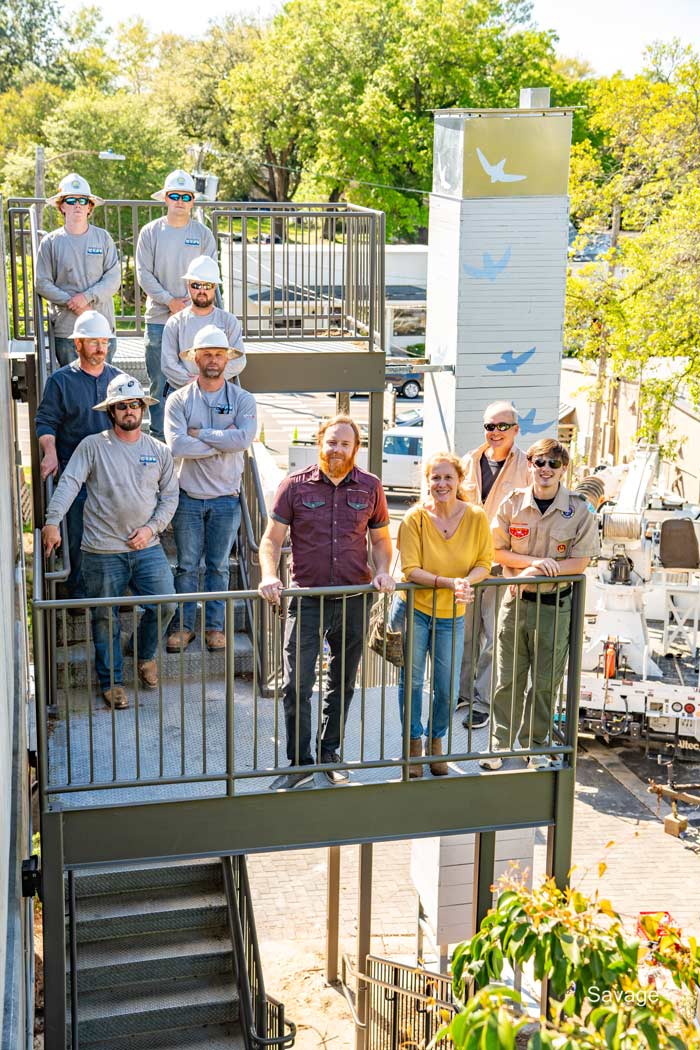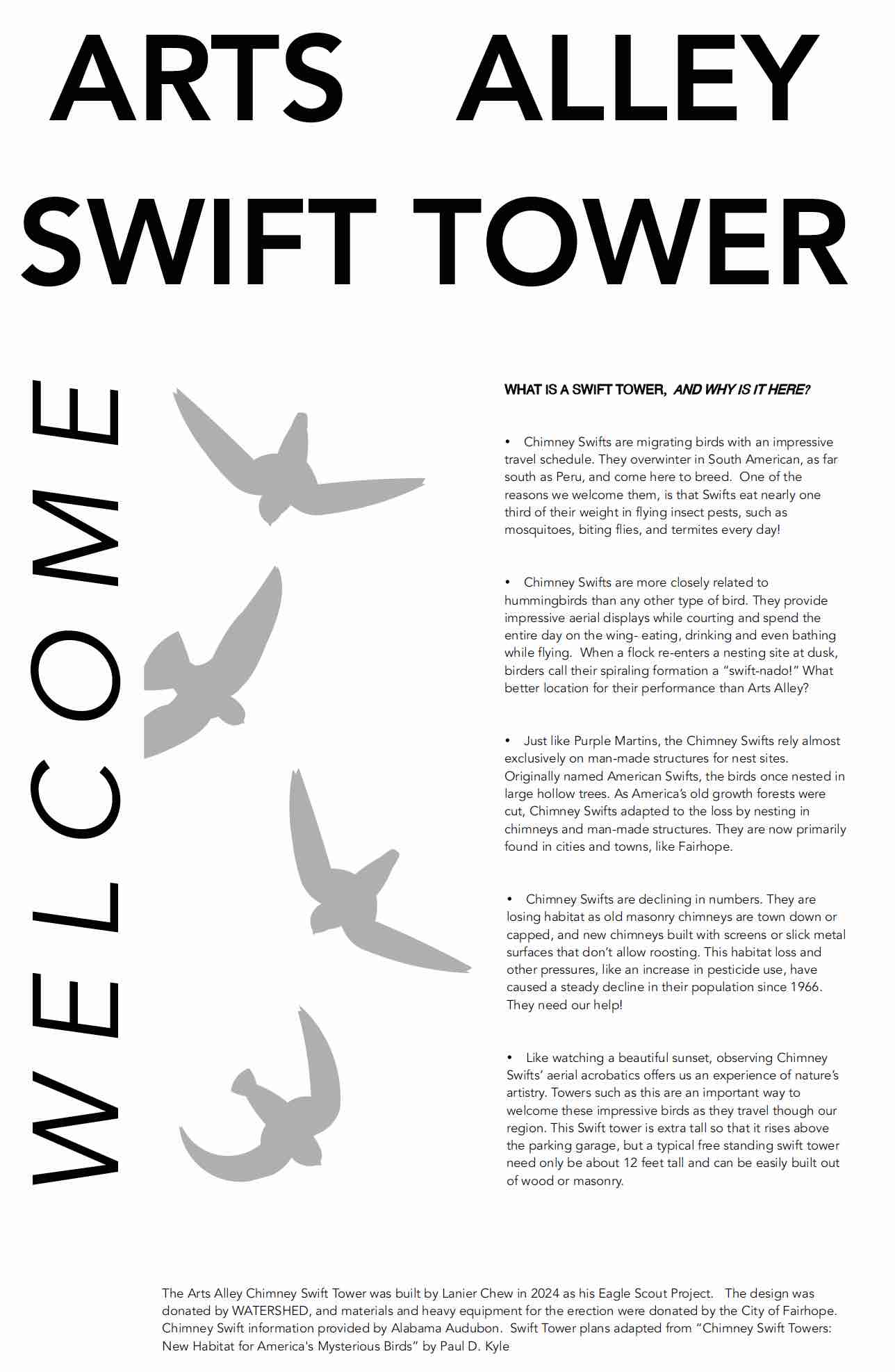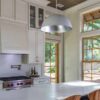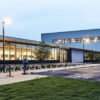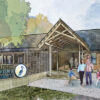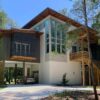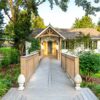What is a Swift Tower, and Why is it Here?
The Arts Alley Swift Tower
Chimney Swifts are migrating birds with an impressive travel schedule.
They overwinter in South America, as far south as Peru, and come to our milder climate to breed. One of the reasons we welcome them, is that swifts eat nearly one third of their weight in flying insect pests, such as mosquitoes, biting flies, and termites every day!
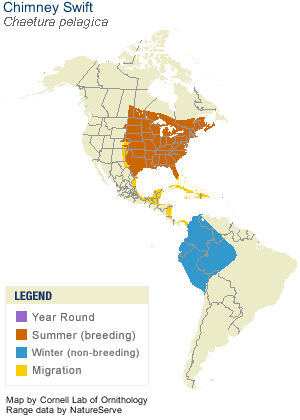
Map from allaboutbirds.org
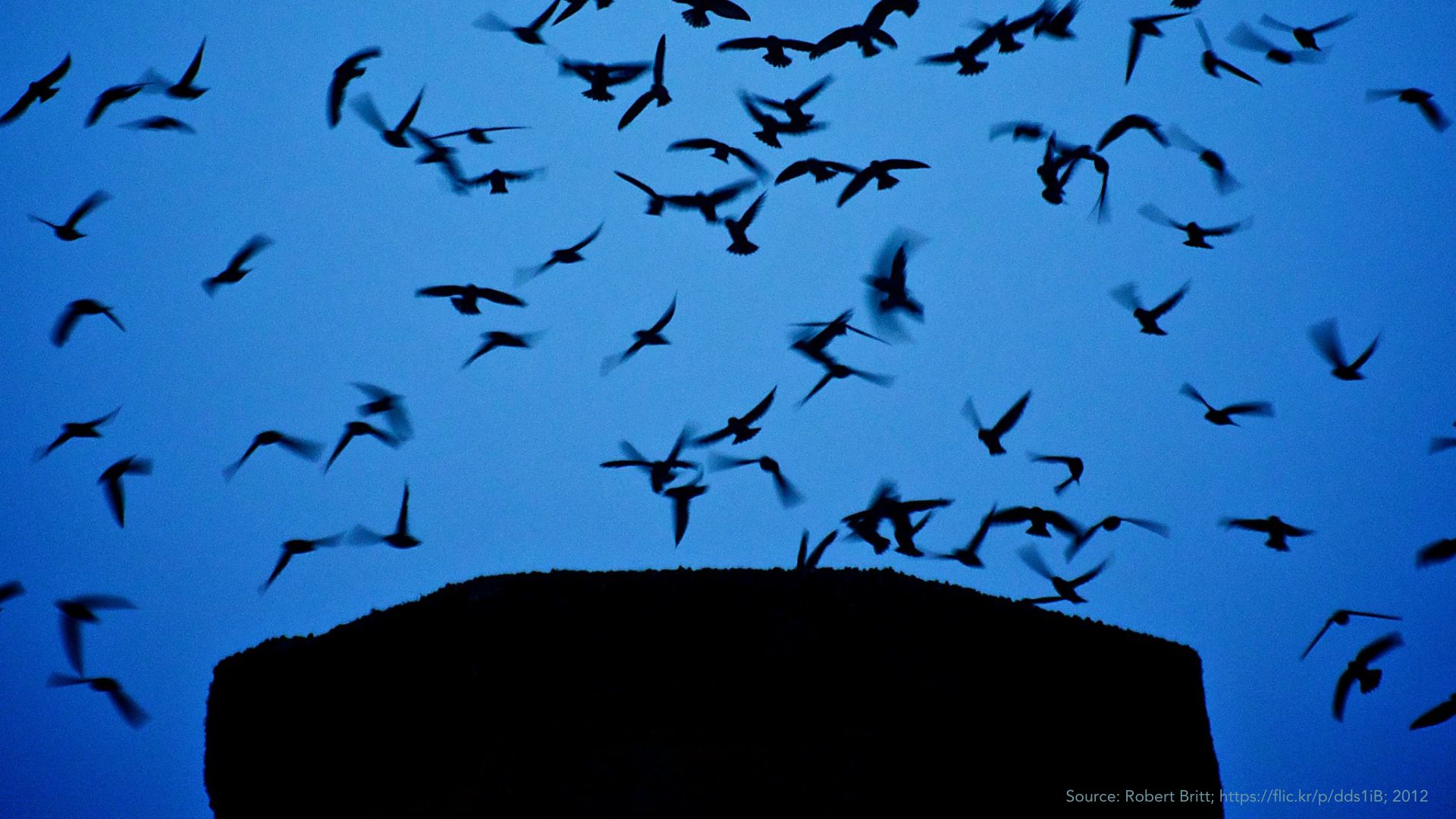
Curtain-Call is at Dusk for the Swift-nado Performance!
Chimney Swifts are more closely related to hummingbirds than any other type of bird. They provide impressive aerial displays while courting and spend the entire day “on the wing” – eating, drinking, and even bathing while flying. When a flock re-enters a nesting site at dusk, birders call their spiraling formation a “swift-nado!” What better location for their performance than Arts Alley?
Why Do They Nest in Chimneys?
Just like Purple Martins, the Chimney Swifts rely almost exclusively on man-made structures for nest sites. Originally named American Swifts, the birds once nested in large hollow trees.
As America’s old growth forests were cut, Chimney Swifts adapted to the loss by nesting in chimneys and man-made structures. They are now primarily found in cities and towns, like Fairhope.
“Their tiny legs and powerful feet allow them to cling on the inside walls of chimneys, but don’t allow them to perch on wires or branches like most birds.”

Chimney Swifts are Declining in Numbers.
They are losing habitat as old masonry chimneys are town down or capped, and new chimneys built with screens or slick metal surfaces that don’t allow roosting. This habitat loss and other pressures, like an increase in pesticide use, have caused a steady decline in their population since 1966. They need our help!
Like watching a beautiful sunset, observing Chimney Swifts’ aerial acrobatics offers us an experience of nature’s artistry. Towers such as this are an important way to welcome these impressive birds as they travel though our region. This Swift tower is extra tall so that it rises above the parking garage, but a typical free standing swift tower need only be about 12 feet tall and can be easily built out of wood or masonry.
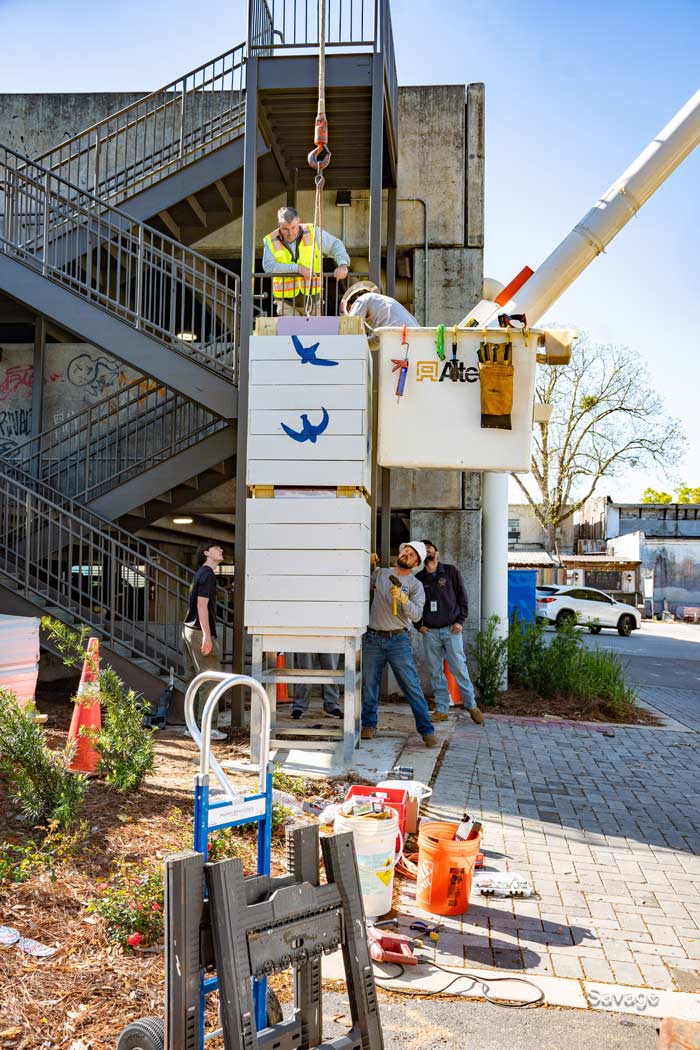
The Arts Alley Chimney Swift Tower was built by Lanier Chew of Fairhope’s Scout Troop 47 in 2024, as his Eagle Scout project.
The design was donated by WATERSHED, and materials and heavy equipment for the erection were donated by the City of Fairhope. Chimney Swift information provided by Alabama Audubon. Swift Tower plans adapted from Chimney Swift Towers: New Habitat for America’s Mysterious Birds by Paul D. Kyle.
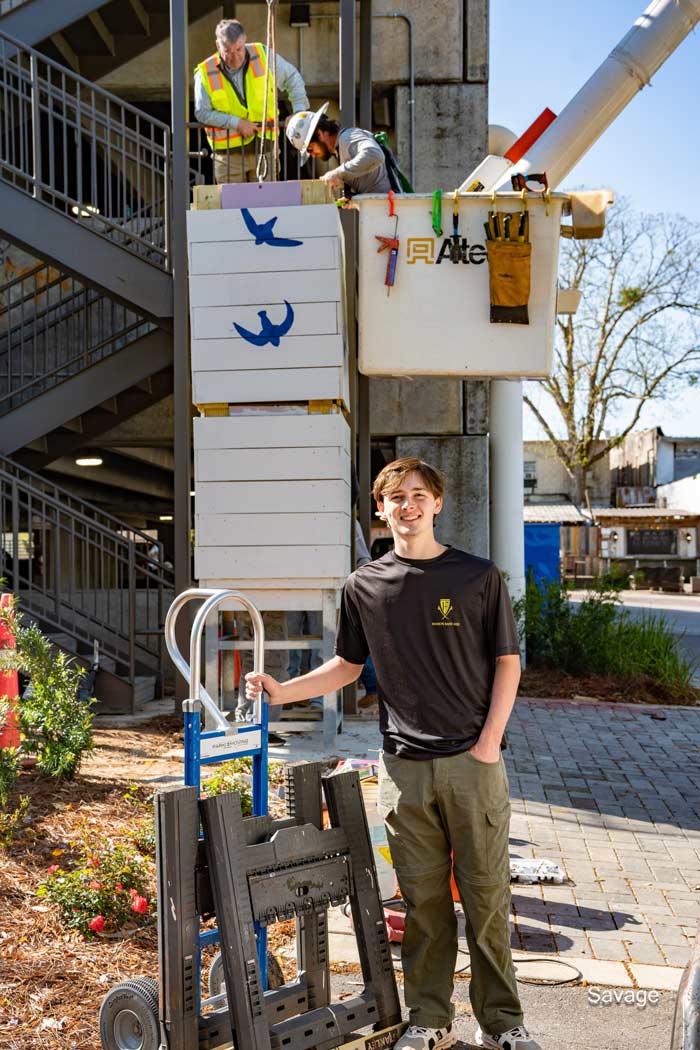
More Information:
Alabama Audubon: Witness a swiftnado by Maggie Amsler, Alabama Audubon, AL.com; Sept.8, 2021
Birmingham Chimney Swifts by Rex Roach, Rex Films, 2014; YouTube Video.
“Swiftnado” – a downtown Birmingham natural phenomenon by Pat Byington, 2017, BhamNow.com; Online article.
Safe Harbor for Chimney Swifts, by Tony Lance, Oct.1, 2019; National Wildlife Federation
Professional Photos by Stephen Savage


